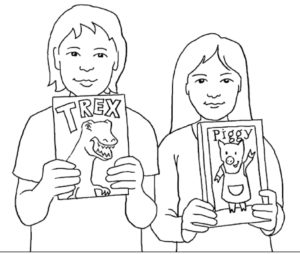Procedure:
- The project is started as a shared enterprise. We want to create a small library of a wide variety of texts (books, picture books, reference books, etc.) in our own language. To be clarified: who can bring what? Where should the books and texts be stored (is there maybe a cabinet or a bookshelf in the school building or in the school library for that purpose)? How should the borrowing of books function?
- The students bring different kinds of reading materials from home and present them to the class. All titles are subsequently listed (e.g. in form of a simple borrowing chart), and placed on a shelf if possible.
- The students now can give each other reading tips or exchange books and magazines with one another. Ten minutes a week could be reserved for this activity. Who takes which book is recorded in the borrowing chart. Two students are selected to assume control of the library, e. g., for a quarter, and to ensure that all borrowed books are returned again in good condition.

Remarks:
- As stated in the introduction, chapter 4d, the students could be asked to bring back from their long vacations reading materials in their native language (to defray the costs, maybe a bazaar, or parent event, etc. might raise some money for that pupose).
- The important thing is that the small HLT library contain reading materials for all age levels, as well as children’s encyclopedias and a dictionary.
- The library may also comprise audio books, be they bought or home-made (see also the teaching suggestions 1 and 10).






